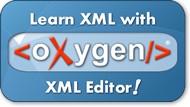SQL UNION Operator


The SQL UNION operator combines two or more
SELECT statements.
The SQL UNION Operator
The UNION operator is used to combine the result-set of two or more SELECT
statements.
Notice that each SELECT statement within the UNION must have the same number of columns.
The columns must also have similar data types. Also, the columns in each SELECT statement must be in the same order.
SQL UNION Syntax
SELECT column_name(s) FROM table_name1
UNION
SELECT column_name(s) FROM table_name2
|
Note: The UNION operator selects only distinct values by default. To
allow duplicate values, use UNION ALL.
SQL UNION ALL Syntax
SELECT column_name(s) FROM table_name1
UNION ALL
SELECT column_name(s) FROM table_name2
|
PS: The column names in the result-set of a UNION are always equal to
the column names in the first SELECT statement in the UNION.
SQL UNION Example
Look at the following tables:
"Employees_Norway":
| E_ID |
E_Name |
| 01 |
Hansen, Ola |
| 02 |
Svendson, Tove |
| 03 |
Svendson, Stephen |
| 04 |
Pettersen, Kari |
"Employees_USA":
| E_ID |
E_Name |
| 01 |
Turner, Sally |
| 02 |
Kent, Clark |
| 03 |
Svendson, Stephen |
| 04 |
Scott, Stephen |
Now we want to list all the different employees in Norway and USA.
We use
the following SELECT
statement:
SELECT E_Name FROM Employees_Norway
UNION
SELECT E_Name FROM Employees_USA |
The result-set will look like this:
| E_Name |
| Hansen, Ola |
| Svendson, Tove |
| Svendson, Stephen |
| Pettersen, Kari |
| Turner, Sally |
| Kent, Clark |
| Scott, Stephen |
Note: This command cannot be used to list all employees in Norway and
USA. In the example above we have two employees with equal names, and only one
of them will be listed. The UNION command selects only distinct values.
SQL UNION ALL Example
Now we want to list all employees in Norway and USA:
SELECT E_Name FROM Employees_Norway
UNION ALL
SELECT E_Name FROM Employees_USA |
Result
| E_Name |
| Hansen, Ola |
| Svendson, Tove |
| Svendson, Stephen |
| Pettersen, Kari |
| Turner, Sally |
| Kent, Clark |
| Svendson, Stephen |
| Scott, Stephen |


Learn XML with <oXygen/> XML Editor - Free Trial!
 |
|
oXygen helps you learn to define,
edit, validate and transform XML documents. Supported technologies include XML Schema,
DTD, Relax NG, XSLT, XPath, XQuery, CSS.
Understand in no time how XSLT and XQuery work by using the intuitive oXygen debugger!
Do you have any XML related questions? Get free answers from the oXygen
XML forum
and from the video
demonstrations.
Download a FREE 30-day trial today!
|
|